- Clone
- P1B5 (See other available formats)
- Regulatory Status
- RUO
- Other Names
- GAP-B3, GAPB3, ILNEB, MSK18, VCA-2, VL3A, VLA3a, Integrin alpha-3, FRP-2, galactoprotein B3, VLA-3 subunit alpha, CD49 antigen-like family member C, antigen identified by monoclonal antibody J143, alpha-3 subunit
- Isotype
- Mouse IgG1, κ
- Ave. Rating
- Submit a Review
- Product Citations
- publications
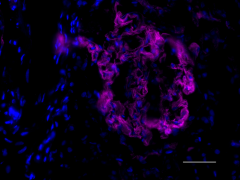
-

IHC staining of Alexa Fluor® 647 anti-CD49C (Integrin α3) antibody (clone P1B5) on frozen human kidney tissue. The tissue was incubated with 1 µg/mL of the primary antibody overnight at 4°C. The slide was mounted with fluoromount G with DAPI. The image was captured with a 40X objective. Scale bar: 50 µm.
| Cat # | Size | Price | Quantity Check Availability | Save | ||
|---|---|---|---|---|---|---|
| 865203 | 25 µg | £105 | ||||
| 865204 | 100 µg | £221 | ||||
CD49c is a 150 kD α integrin chain known as α3 integrin or VLA-3 α chain. It is a type I transmembrane glycoprotein which is proteolytically cleaved into two disulfide linked fragments of 125 kD and 30 kD. CD49c forms a heterodimer with integrin β1 (α3β1, CD49c/CD29, VLA-3) and is expressed by many types of adhesion cells, such as endothelial cells, epithelial cells, and dermal fibroblasts. Weak expression has been reported on leukocytes. VLA-3 plays a role in cell-cell and cell-matrix adhesion through binding Kalinin, collagen, laminin-1, laminin-5, entactin, and fibronectin.
Product DetailsProduct Details
- Verified Reactivity
- Human
- Antibody Type
- Monoclonal
- Host Species
- Mouse
- Immunogen
- The P1B5 monoclonal antibody was generated against human HT1080 cells.
- Formulation
- Phosphate-buffered solution, pH 7.2, containing 0.09% sodium azide
- Preparation
- The antibody was purified by affinity chromatography and conjugated with Alexa Fluor® 647 under optimal conditions.
- Concentration
- 0.5 mg/mL
- Storage & Handling
- The antibody solution should be stored undiluted between 2°C and 8°C, and protected from prolonged exposure to light. Do not freeze.
- Application
-
IHC-F - Quality tested
- Recommended Usage
-
Each lot of this antibody is quality control tested by immunohistochemical staining on frozen tissue sections. For immunohistochemistry, a concentration range of 1.0 - 5.0 µg/mL is suggested. It is recommended that the reagent be titrated for optimal performance for each application.
* Alexa Fluor® 647 has a maximum emission of 668 nm when it is excited at 633 nm / 635 nm.
Alexa Fluor® and Pacific Blue™ are trademarks of Life Technologies Corporation.
View full statement regarding label licenses - Excitation Laser
-
Red Laser (633 nm)
- Application Notes
-
This antibody recognizes the a3 subunit.
-
Application References
(PubMed link indicates BioLegend citation) -
- Wayner EA and Hoffstrom BG. 2007. Methods. Enzymol. 426:117.
- Wayner EA, et al. 1993. J Cell Biol. 121:1141. (IP)
- Carter WG, et al. 1990. J Cell Biol. 110:1387-404 (IP)
- Wayner EA and Carter WG. 1987. J Cell Biol. 105:1873. (IP)
- RRID
-
AB_2861093 (BioLegend Cat. No. 865203)
AB_2861094 (BioLegend Cat. No. 865204)
Antigen Details
- Structure
- CD49c is a 150 kD type I transmembrane glycoprotein.
- Distribution
-
Cellular distribution: Plasma membrane.
Tissue distribution: Endothelial cells, epithelial cells, and dermal fibroblast. - Function
- CD49c plays a role in cell-cell and cell-matrix adhesion.
- Ligand/Receptor
- Kalinin, collagen, laminin-1, laminin-5 and entactin, fibronectin
- Cell Type
- Endothelial cells, Epithelial cells, Fibroblasts
- Biology Area
- Cell Biology, Neuroscience, Signal Transduction, Synaptic Biology
- Molecular Family
- Adhesion Molecules, CD Molecules
- Gene ID
- 3675 View all products for this Gene ID
- UniProt
- View information about CD49c on UniProt.org
Related FAQs
Other Formats
View All CD49C Reagents Request Custom Conjugation| Description | Clone | Applications |
|---|---|---|
| Anti-CD49C (Integrin α3) | P1B5 | IHC-F,FC,IP |
| Purified anti-CD49C (Integrin α3) | P1B5 | IHC-F,ICC,FC,IP |
| Alexa Fluor® 647 anti-CD49C (Integrin α3) | P1B5 | IHC-F |
Compare Data Across All Formats
This data display is provided for general comparisons between formats.
Your actual data may vary due to variations in samples, target cells, instruments and their settings, staining conditions, and other factors.
If you need assistance with selecting the best format contact our expert technical support team.
-
Anti-CD49C (Integrin α3)
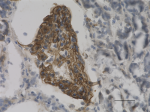
IHC staining of anti-CD49C (Integrin α3) antibody (clone P1B... 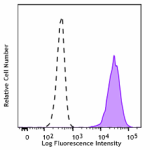
HeLa cells were fixed with 4% PFA, permeabilized with Intrac... -
Purified anti-CD49C (Integrin α3)
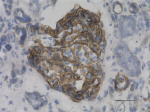
IHC staining of purified anti-CD49C (Integrin α3) antibody (... 
ICC staining of purified anti-CD49C (Integrin α3) antibody (... 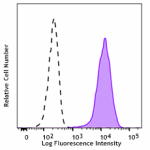
HeLa cells were fixed with 4% PFA, permeabilized with Intrac... -
Alexa Fluor® 647 anti-CD49C (Integrin α3)

IHC staining of Alexa Fluor® 647 anti-CD49C (Integrin α3) an...
 Login / Register
Login / Register 













Follow Us